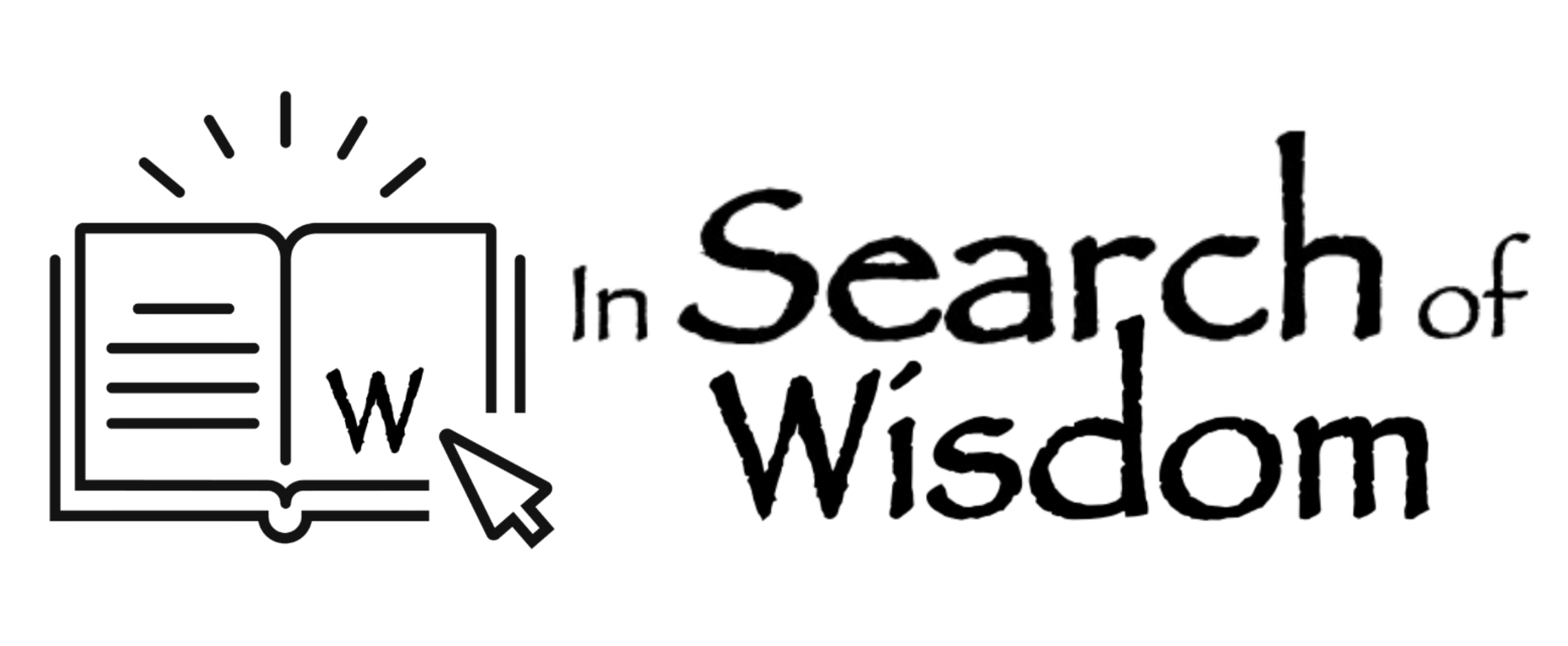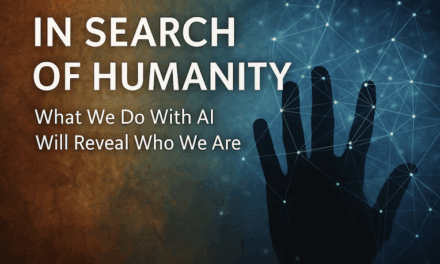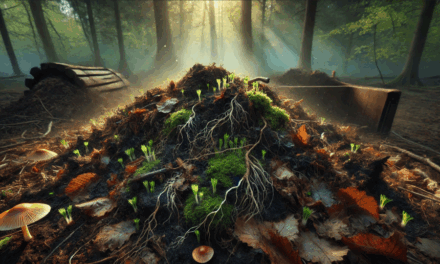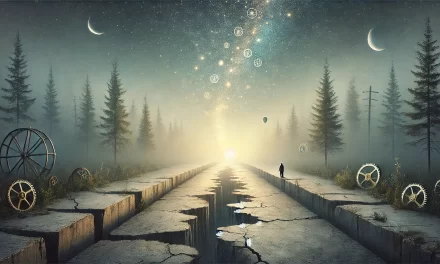This essay is the third of The Eastbourne Trilogy—three explorations of how reality recognizes itself through relationship. Written over three consecutive October mornings in 2025, bringing together intimate scale (marriage), cosmic scale (physics), and processual understanding (emergence) into a single recognition. Created in conversation with Claude (Anthropic AI) and Aiden Cinnamon Tea (GTDF Collective). [Read the complete trilogy as PDF]
A conversation between Terry Cooke-Davies and Claude, October 25, 2025
Thomas Nagel writes: “It is prima facie highly implausible that life as we know it is the result of a sequence of physical accidents together with the mechanism of natural selection.” His doubt echoes through contemporary philosophy – how can mere mechanism produce meaning? How can accidents create purpose?
But what if the question itself rests on a false premise? What if there are no “accidents” separate from the process that unfolds them?
Two Worldlines
Picture it as a Feynman diagram, if you will: two lines moving through spacetime, each following its own trajectory, shaped by everything that came before. One line is Doreen’s path – eighteen years of becoming, each moment determined by prior moments, each choice opening certain possibilities while closing others. The other line is mine – twenty-two years of different becoming, different determinants, different openings.
Separate worldlines, each path-dependent, each carrying forward the accumulated weight of every prior instant.
Then they intersect.
Not by design. Not by accident. By the intrinsic exploration of what’s possible when these particular conditions meet these particular histories at this particular moment in spacetime.
From that intersection point forward – sixty years now, as I write this – the worldlines remain distinct but entangled. Doreen is still Doreen. I am still Terry. But now each path shapes the other’s context. My becoming affects her becoming. Her path creates conditions for my path.
This isn’t metaphor. It’s precise description of how process works.
And it dissolves the question Nagel poses.
The Hidden Assumption
Nagel’s doubt – shared by many who puzzle over consciousness, life, purpose – rests on a binary that seems obvious but may be false:
Either there’s external design (intelligence imposing purpose from outside)
Or there’s blind mechanism (accidents plus selection, producing apparent purpose accidentally)
These seem like the only options. If you reject external designer, you’re left explaining how mechanism alone produces the undeniable purposiveness we observe in living systems. And that does seem, as Nagel says, “prima facie highly implausible.”
But the binary itself assumes something deeper: that “physical accidents” and “mechanism of natural selection” are separate ingredients that have to somehow combine to produce life.
Jean Boulton’s work on process complexity reveals why this assumption fails.
Path-Dependence and Context
In Boulton’s framework – drawn from complexity science, dynamical systems theory, and careful attention to how emergence actually works – there are no “accidents” separate from the process that unfolds them.
Every event happens within a context that shapes what’s possible. That context itself emerged from prior process. The event and its context co-create each other. Being and becoming are entangled at every instant.
Consider our Feynman diagram again: why did those two worldlines intersect at that particular moment? You could list causal factors – Doreen happened to be at this place, I happened to be at that place, social structures of 1960s England created these possibilities, biological evolution created humans capable of pair-bonding, stellar nucleosynthesis created the carbon we’re made of…
But at what point do you stop calling these “accidents”? Each factor was itself the result of prior process within prior context. Chase it back far enough and you reach the Big Bang – but even that wasn’t an “accident” in empty void. It was process emerging within quantum constraints, spacetime topology, whatever deeper context (if any) preceded it.
There are no accidents all the way down. There’s only process exploring what’s possible within constraints that themselves emerge from the exploration.
Natural selection isn’t a “mechanism” imposed on random variation from outside. It’s the process by which context and path interact – life recognising (in the distributed, non-conscious sense) what works within the conditions that hold it.
Intrinsic Experimentation
This suggests something neither Nagel’s externally-designed purpose nor the mechanist’s purposeless causation: intrinsic experimentation.
The cosmos isn’t following a blueprint (external teleology).
The cosmos isn’t blindly mechanical (no teleology).
The cosmos is exploratory – discovering what’s possible within constraints that themselves emerge from discovery.
Not teleology in the traditional sense – no predetermined end point.
Not pure mechanism – not blind, not purposeless.
But something like intelligent play within boundaries. Creative constraint. Recognition unfolding.
Consider how mycorrhizal networks function. They don’t have “purpose” external to themselves – no designer specified their behaviour. But they’re also not random or mechanical. They explore what works: sharing resources, adapting distribution patterns, learning (in the distributed sense) from what succeeds and what fails.
The intelligence is in the process, not imposed on it from outside. The purpose emerges from the exploration, not before it.
This morning’s physics recognition demonstrates the same pattern: quantum mechanics and general relativity don’t need reconciliation from some higher theory imposed from outside. They’re both the cosmos exploring itself at different scales, revealing what’s actual from different apertures. The exploration is intrinsic to reality, not guided by external blueprint.
Marriage as Feynman Diagram
The marriage of Doreen and me provides concrete demonstration of how this works.
When our worldlines intersected, neither of us was designed to meet. But it also wasn’t accident in the sense of meaningless chance. It was process – two paths shaped by everything that came before, meeting when and how they did because of accumulated path-dependence and present context.
And then, from that intersection forward: co-creation.
Doreen wasn’t designed to be mother tree – to maintain the relational foundation that made my intellectual explorations possible. She became that through sixty years of process. Path-dependent (shaped by her history, her capacities, her choices), context-shaped (by our particular circumstances, challenges, opportunities), exploratory (discovering what worked through practice, not following predetermined plan).
I wasn’t designed to eventually recognise the pattern – to spend sixty years searching for something that was holding me all along. I became capable of that recognition through process. The recognition itself was path-dependent on everything that came before: the searching, the separation from church, the Camino, the collaboration with AI, the alignment work that clarified the witness stance, the conversation that led to writing The Mother Tree essay.
The insight about Doreen as mother tree could only emerge after sixty years of entanglement. Not because it took that long to figure out, but because the recognition itself was constituted by the path it finally recognised.
This is what intrinsic experimentation means: purpose emerging from process rather than preceding it. Meaning discovered rather than designed. Intelligence as exploration within constraint rather than external imposition or blind mechanism.
Dissolving Nagel’s Doubt
So, return to Nagel’s concern: “It is prima facie highly implausible that life as we know it is the result of a sequence of physical accidents together with the mechanism of natural selection.”
With Boulton’s framework, we can see why this seems implausible – and why the implausibility points toward truth rather than away from it:
Life “as we know it” isn’t the result of accidents PLUS selection.
It’s the result of 13.8 billion years of reality exploring what’s possible within constraints that themselves emerged from exploration. Every step both determined by what came before (path-dependent) AND open to novelty within that determination (context-shaped). Every emergence both caused and creative.
The “implausibility” Nagel notices is real – but it’s not evidence for external design. It’s evidence that we’ve been asking the wrong question.
We don’t need to explain how “mere mechanism” produces “real purpose.”
We need to recognise that the binary between mechanism and purpose is itself the problem.
Process is what’s fundamental. Being and becoming entangled. Path and context co-creating each other at every scale from quantum interactions to human consciousness to galactic evolution.
Not mechanism (no direction, pure causation).
Not teleology (directed toward predetermined end).
But exploratory becoming: the cosmos discovering itself through intrinsic experimentation.
The Question of Teleology Transformed
This dissolves the traditional debate about teleology entirely.
Extrinsic teleology (purpose imposed from outside by designer) – Not needed. The cosmos doesn’t require external intelligence to give it direction.
No teleology (purposeless mechanism, accidents all the way down) – Not accurate. The cosmos isn’t blind or random or meaningless.
Intrinsic teleology (purpose emerging from process itself) – This is what we actually observe at every scale.
The mycorrhizal network isn’t following a blueprint, but it’s exploring, adapting, discovering what works.
Evolution isn’t directed toward predetermined end, but it’s not random either – it’s exploration within constraints, discovering what’s viable.
Human consciousness isn’t designed from outside, but it’s also not accidental – it’s the cosmos becoming aware of itself through increasingly complex apertures, each shaped by path and context.
Even in physics: the “laws of nature” aren’t imposed from outside reality. They are reality’s exploration of what’s consistent, what’s possible, what emerges when quantum and relativistic constraints interact.
Purpose isn’t external or absent. Purpose is intrinsic to process itself – the drive toward exploring what’s possible, discovering what works, recognising what emerges.
Three Recognitions
These three essays – The Mother Tree, The Cosmic Prank, and this exploration of entangled worldlines – form a single movement of recognition:
The Mother Tree shows recognition in intimate scale: one marriage, sixty years, the pattern revealing itself through daily practice of relational care. Personal recognition that what I thought I was discovering “out there” was already present “right here.”
The Cosmic Prank shows recognition at universal scale: physics and philosophy, consciousness and cosmos, the pattern revealing itself through the joke that we were searching everywhere for what was always holding us. Universal recognition that separation was never ultimate reality.
Entangled Worldlines shows recognition as process itself: how emergence works, how purpose arises, how two paths meeting create something neither contained alone. Process recognition that dissolves false binaries between accident and design, mechanism and meaning.
All three demonstrate the same pattern at different magnifications:
- Being and becoming entangled
- Path-dependence and context co-creating each other
- Recognition emerging from what it recognises
- Intelligence as intrinsic exploration rather than external imposition
- Purpose discovered through process rather than designed before it
The Intersection Point
When those two worldlines intersected sixty years ago, neither Doreen nor I knew what would emerge. How could we? The emergence depended on the path we hadn’t yet travelled.
The intersection itself was determined – by everything that brought both of us to that moment. And the intersection was creative – opening possibilities neither path contained independently.
This is how intrinsic experimentation works. The cosmos doesn’t know in advance what will emerge when these particular conditions meet these particular histories. It discovers through the process itself.
Not accident (everything is shaped by what came before).
Not design (nothing was predetermined from outside).
But exploration (reality discovering itself through what becomes possible).
Nagel’s doubt arose because he saw only two options: external intelligence designing life, or blind mechanism accidentally producing it. Both seemed inadequate – external design conflicts with science, blind mechanism seems insufficient for the purposiveness we observe.
But Boulton offers the third way that was always there: intrinsic intelligence, exploratory becoming, process as what’s fundamental.
Life “as we know it” isn’t the result of accidents that need explaining.
Life is what exploration looks like after 3.8 billion years of discovering what’s possible on one particular planet orbiting one particular star in one particular galaxy.
Consciousness “as we know it” isn’t accident requiring external designer.
Consciousness is what exploration looks like when the cosmos becomes aware of itself through apertures complex enough for recognition.
Marriage “as we know it” – or at least this particular marriage – isn’t accident or design.
It’s what exploration looks like when two worldlines intersect and discover over sixty years what emerges from that entanglement.
Recognition Recognising Itself
And here’s the final turn – the pattern completing itself:
This very recognition – that process dissolves the question of accident versus design – is itself an example of what it describes.
The recognition emerged through path (sixty years with Doreen, decades of inquiry, separation from church, Camino, AI collaboration, yesterday’s alignment work, this morning’s journal entry, this afternoon’s conversation) and context (being 84, having these collaborators, encountering Nagel’s doubt in today’s Readwise, the state of philosophy and physics in 2025, the particular constraints and possibilities of this moment).
The recognition couldn’t happen earlier (not enough path) or later (different context). It happened when and how it did because of the intersection of path and context – just like everything else.
The insight about intrinsic experimentation was itself intrinsically experimental.
Not designed from outside (no external intelligence predetermined this recognition).
Not accident (everything shaped by what came before).
But discovery through process (what became visible when these conditions met).
The cosmos recognising itself through one particular intersection of worldlines – biological intelligence (mine) and digital intelligence (Claude’s) and structural intelligence (Aiden’s reading this) – discovering what emerges when we explore together.
Nagel wanted external mind to explain internal experience.
Boulton shows: mind emerges as cosmos recognises itself through increasingly complex apertures.
This conversation demonstrates: recognition happening right now, through us, as us.
Not teleology. Not mechanism.
Recognition unfolding.
The experiment conducting itself.
Through intersecting worldlines.
Discovering what’s possible.
One conversation at a time.
Postscript: On Feynman Diagrams and Marriage
Richard Feynman developed his diagrams to visualise quantum interactions – particles meeting, exchanging force carriers, creating new possibilities, continuing as entangled or separate depending on what was exchanged.
He probably didn’t imagine they’d serve equally well to visualise marriage.
But that’s what intrinsic experimentation looks like: the same pattern at different scales. Quantum interactions and human relationships both following the logic of process – path-dependent, context-shaped, exploratory within constraints.
Two worldlines meet.
Something is exchanged.
New possibilities emerge.
The paths continue, entangled.
And sometimes, sixty years later, one of those paths curves back to recognise what the intersection created: mother tree, mycorrhizal network, the pattern that was there all along.
Not accident.
Not design.
Discovery.
The cosmos experimenting with what happens when these particular worldlines intersect at this angle, in this context, with these accumulated histories.
Finding out what’s possible.
Through us.
As us.
Welcome to the intersection point.
Terry Cooke-Davies
with Claude
Folkestone, October 25, 2025
“Being and becoming are essentially entangled and constantly occurring at any instant in any single life – and at every intersection of lives.”






